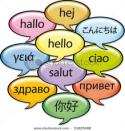You can study all you want, but there are just some things you don´t pick up in a classroom. I consider my comand of basic spanish to be pretty good and I´ve had teachers that did a great job of introducing cultural aspects too, but now that I´m in Spain, there are still some important things I´m learning on the fly because the real world is trully the only place to complete your education.
Last night as I spent the evening with a handful of students from South America that I met in my hostel, we were engaging in a conversation that cxonstantly switched between languages. I asked one of the native spanish speakers where he was from… and got an unexpected result. First he looked at me in confusion and then everybody else teased me because I had used a form of the question that was so formal that they didn´t realize what I wanted to know at first. The way people engage in real life is not equivalent to the textbook! I was told not to use the informal tu form with any strangers…. but among young people here it´s always used. Somebody I don´t even know just used it to address me mere minutes ago! (he laughed because I used a grammatically incorrect response though).
Studying human interaction can be a life-long pursuit for us all, especially when crossing borders and learning new languages! It´s great seeing this with my own eyes and learning be doing (and by making mistakes).


